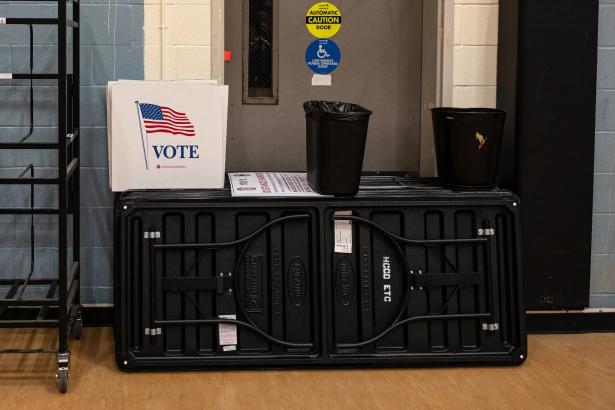A federal appeals court further narrowed the scope of the 1965 Voting Rights Act, ruling that members of separate minority groups cannot join together to claim that a political map has been drawn to dilute their voting power.
The 12-to-6 ruling on Thursday by the full Fifth Circuit Court of Appeals overturned almost four decades of legal precedent, as well as earlier rulings by a three-judge panel of the same appeals court and, before that, a federal district court. It applies only in Louisiana, Mississippi and Texas, the three states where the court has jurisdiction. But the decision, which deals with a fairly common issue in redistricting, has national implications.
The case involves a district map for county commissioners in Galveston County, Texas. Mark Henry, the elected county judge who oversees the Republican-dominated commissioner’s court that drew the map, called the ruling “a great win for the rule of law and the Constitution.” Mr. Henry is a defendant in the lawsuit.
The plaintiffs in the case, including the Justice Department and branches of the N.A.A.C.P. and the League of United Latin American Citizens, or LULAC, have not decided whether to appeal the ruling to the U.S. Supreme Court. But lawyers for the plaintiffs noted that the decision handed down on Thursday ordered the federal district court to reconsider two other claims from the original lawsuit — that the county had intentionally discriminated against minority voters, and that it had engaged in illegal racial gerrymandering. So the map could still be found illegal on those grounds.
“We still have a lifeline,” said Robert Quintero, the president of the Galveston chapter of LULAC. “We won at this court before, and we hope that the judge will use his same wisdom that he used in the first decision.”
A lawyer for the Black and Latino voters who brought the suit, Mark P. Gaber of the Washington-based Campaign Legal Center, said the argument that their voting power had been diluted remained strong.
“I’m hopeful that at the end of the day, we’re going to prevail for the minority citizens of Galveston County,” he said.
The latest round of redistricting in Galveston County, a community of 350,000 people, redrew a district in which Black and Hispanic voters together had made up a majority of voters. The redrawn boundaries reduced their combined share of the district’s electorate to 38 percent. The lawsuit challenging the new map claimed that doing so violated Section 2 of the Voting Rights Act, which prohibits drawing boundaries that dilute minority voting power.
The trial judge, and the three-judge appellate panel each ruled that the new map was a clear violation of the law. But the full Fifth Circuit disagreed.
“Nowhere does Section 2 indicate that two minority groups may combine forces to pursue a vote dilution claim,” Judge Edith H. Jones, who was appointed by President Ronald Reagan, wrote for the majority. “On the contrary, the statute identifies the subject of a vote dilution claim as ‘a class,’ in the singular, not the plural.”
That reasoning ran counter to the same court’s logic in a 1988 case, Campos v. Baytown, that had set the precedent for cases of this sort. In that case, the majority wrote that “there is nothing in the law that prevents the plaintiffs from identifying the protected aggrieved minority to include both Blacks and Hispanics.”
Judge Dana Marie Douglas, who was named to the court by President Biden, joined four other judges in a caustic dissent. “Today, the majority finally dismantled the effectiveness of the Voting Rights Act in this circuit, leaving four decades of en banc precedent flattened in its wake,” she wrote.
Judge Douglas noted that Congress referred to several cases that involved coalitions of minority-group voters when it amended the Voting Rights Act in 1975, and specifically mentioned coalitions of voters when it amended another part of the act, Section 5, in 2006.
The 12 judges in the majority were all appointed by Republican presidents. Five of the six dissenters were named by Democratic presidents.
Lawsuits like the one in Galveston that are brought by a coalition of voters from different minority groups are not uncommon, but they are particularly difficult to win because it must be proved that the voters in the coalition are “cohesive” and have common interests.
The Galveston case was seen as an especially strong one. The federal judge who made the initial ruling in the case, District Judge Jeffrey Vincent Brown, called the evidence of dilution “stark and jarring,” and said in his decision that the map was “fundamentally inconsistent” with Section 2 of the Voting Rights Act. Judge Brown was named to the bench by President Donald J. Trump.
Joe Compian, the mayor pro tem of the city of La Marque and one of the named plaintiffs in the case, said that the redrawn map upheld by the Fifth Circuit markedly affected his city, where most residents are Black or Hispanic.
Before the district map was redrawn in 2021, he said, La Marque had been represented on the commissioner’s court by its lone Democrat. The new map not only undermined electoral representation for Black and Hispanic residents, he said, but it also fractured La Marque’s voice on the commissioner’s court.
“Now we have to reach out to three different commissioners, because they basically took our community and divided it,” Mr. Compian said.
Michael Wines is a national correspondent, writing about voting and election issues. He is based in Washington, D.C. More about Michael Wines
J. David Goodman is the Houston bureau chief for The Times, reporting on Texas and Oklahoma. More about J. David Goodman


Spread the word